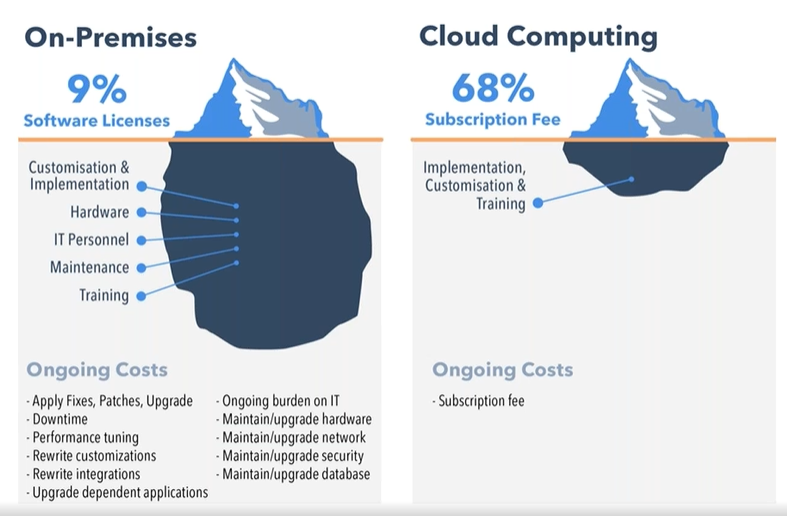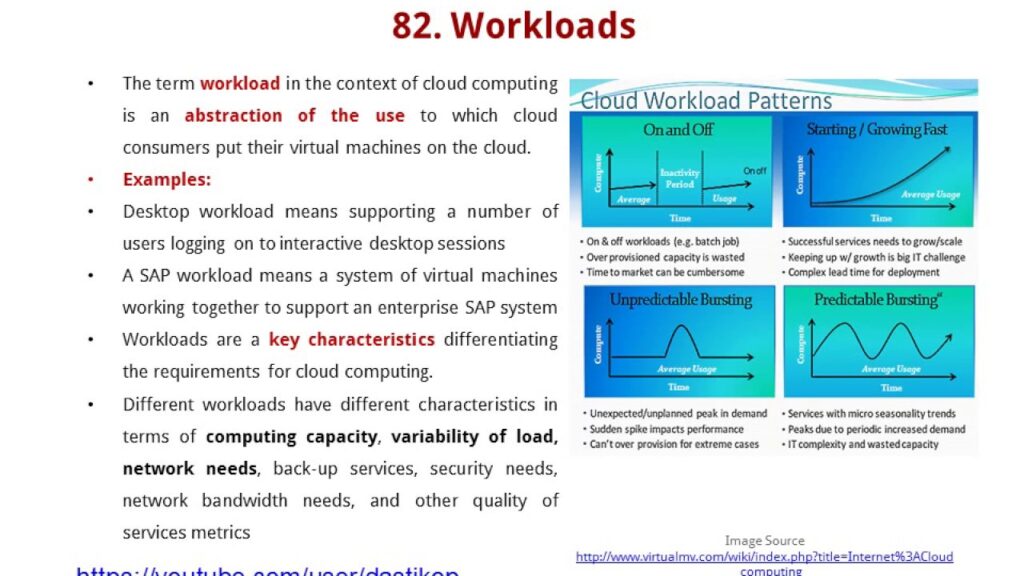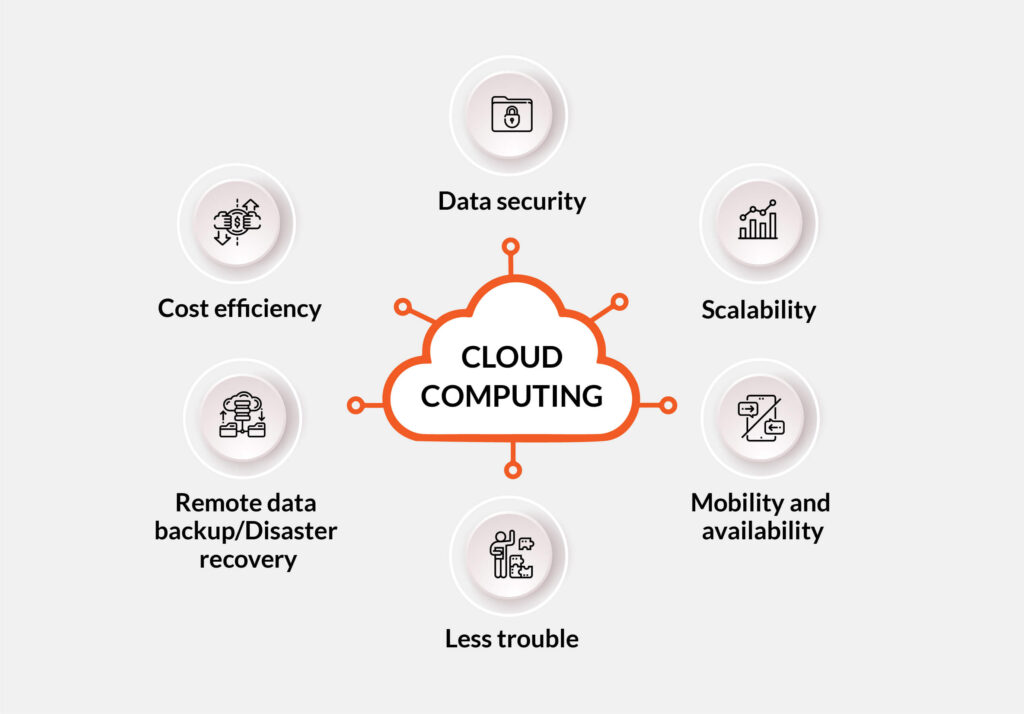As businesses continue to grow and expand, the need for efficient and cost-effective computing solutions becomes increasingly important. Two main options for companies are cloud computing and on-premise computing. Cloud computing involves using remote servers hosted on the internet to store, manage, and process data, while on-premise computing involves using physical servers and infrastructure located on-site at the company. One question that often arises when comparing these two options is whether cloud computing is cheaper than on-premise.
To answer this question, it’s important to consider the costs associated with each option. While on-premise computing requires a significant upfront investment in hardware, software, and infrastructure, cloud computing typically operates on a pay-as-you-go model, where businesses only pay for the services and resources they use. However, there are other factors to consider, such as maintenance and support costs, security measures, and the potential for unexpected expenses. In this article, we’ll explore the costs associated with both cloud and on-premise computing, and provide insight into which option may be more cost-effective for your business needs.
Cloud computing is often cheaper than on-premise solutions due to reduced maintenance costs, and the ability to use pay-as-you-go billing and subscription-based models. Cloud providers can provide high levels of scalability, meaning that businesses only pay for the services they use. This reduces costs associated with software and hardware upgrades, and offers a cost-effective solution for businesses of all sizes. On-premise solutions require businesses to invest in infrastructure, hardware, software and staff, which can often be cost prohibitive, especially for smaller businesses.

Is Cloud Computing Cheaper Than On-Premise?
Cloud computing has become a popular choice for businesses and organizations looking to reduce their IT costs. By leveraging cloud computing, organizations can access a wide range of applications and services without having to purchase, install and maintain their own hardware or software. The cost savings associated with cloud computing makes it an attractive option for organizations looking to cut costs while still maintaining their IT infrastructure.
Cost Savings from Cloud Computing
Cloud computing offers cost savings due to the fact that businesses and organizations only pay for the resources they use. This is in contrast to traditional on-premise solutions where businesses and organizations would need to purchase and maintain their own hardware, software and infrastructure. Additionally, cloud computing eliminates the need for businesses and organizations to purchase additional hardware and software to scale their operations as their needs grow, saving them additional costs.
In addition to the cost savings associated with the resources used, cloud computing also offers businesses and organizations access to a wide range of applications and services that can be used to improve their operations. By using cloud computing, businesses and organizations can access a wide range of applications and services without having to purchase and maintain their own hardware, software and infrastructure.
Cost Savings from On-Premise Solutions
On-premise solutions offer businesses and organizations the ability to purchase and maintain their own hardware and software, as well as the flexibility to customize their IT infrastructure. This gives businesses and organizations the ability to tailor their IT infrastructure to their specific needs, allowing them to save costs by not having to purchase additional hardware and software that might not be necessary for their operations.
On-premise solutions also offer businesses and organizations more control over their IT infrastructure, allowing them to maintain a secure and reliable system. Additionally, businesses and organizations can benefit from the fact that on-premise solutions are typically more cost effective than cloud computing, as they do not require the additional costs associated with cloud computing such as subscription fees and usage fees.
Which Solution is Cheaper?
The answer to which type of solution is cheaper depends on the individual needs and resources of the business or organization. While cloud computing offers cost savings due to the fact that businesses and organizations only pay for the resources they use, on-premise solutions offer more control over their IT infrastructure and can be more cost-effective in the long run. Ultimately, businesses and organizations must weigh the pros and cons of each solution to determine which one is the most cost-effective for their specific needs.
Conclusion
When it comes to deciding whether cloud computing or on-premise solutions are cheaper, businesses and organizations must consider their individual needs and resources. Cloud computing offers cost savings due to the fact that businesses and organizations only pay for the resources they use, while on-premise solutions offer more control over their IT infrastructure and can be more cost-effective in the long run. Ultimately, businesses and organizations must weigh the pros and cons of each solution to determine which one is the most cost-effective for their specific needs.
Frequently Asked Questions about Cloud Computing vs On-Premise
Cloud computing and on-premise computing are two different ways to store and access data, with advantages and disadvantages to each. Here are some frequently asked questions about the two approaches.
Is Cloud Computing Cheaper than On-Premise?
The answer to this question depends on the specific situation, as there is no one-size-fits-all answer. Generally, cloud computing can be cheaper than on-premise computing. Cloud providers operate on economies of scale, meaning they can provide services at a lower cost than smaller organizations. Additionally, cloud providers often offer a pay-as-you-go pricing model, which can help organizations reduce costs.
On the other hand, some organizations may find that on-premise computing is more cost effective. This is especially true for organizations that require a large amount of computing power or need to store and access large amounts of data. Additionally, on-premise computing does not require organizations to pay for a third-party provider, which can help reduce costs.
What Are the Security Benefits of Cloud Computing?
Cloud computing offers several security benefits compared to on-premise computing. Cloud providers typically have robust security practices in place to protect customer data. Additionally, cloud providers often offer built-in redundancy and backup capabilities, which can help reduce the risk of data loss.
On-premise computing also has security benefits. Organizations that use on-premise computing have more control over their data, as they are not relying on a third-party provider. Additionally, organizations can customize their security protocols to fit their specific needs.
What Are the Benefits of On-Premise Computing?
On-premise computing offers several benefits compared to cloud computing. Organizations that use on-premise computing have more control over their data, as they are not relying on a third-party provider. Additionally, on-premise computing can offer more customization options, as organizations can tailor their systems to meet their specific needs.
On the other hand, organizations that use cloud computing can benefit from the scalability of cloud providers. Cloud providers can offer organizations the ability to rapidly scale up or down their computing power, as needed. Additionally, cloud providers often offer built-in redundancy and backup capabilities, which can help reduce the risk of data loss.
What Are the Disadvantages of Cloud Computing?
Cloud computing has several potential drawbacks compared to on-premise computing. Organizations that use cloud computing may have less control over their data, as they are relying on a third-party provider. Additionally, organizations may be subject to additional costs if they need to scale up their computing power or access more data.
On the other hand, on-premise computing can have its own drawbacks. Organizations may need to invest in additional hardware and software to support their on-premise systems, which can add up to significant costs. Additionally, organizations may need to hire additional personnel to manage their on-premise systems, which can add to their overhead costs.
What Are the Advantages of Cloud Computing?
Cloud computing offers several advantages compared to on-premise computing. Cloud providers typically offer a pay-as-you-go pricing model, which can help organizations reduce costs. Additionally, cloud providers often offer built-in redundancy and backup capabilities, which can help reduce the risk of data loss.
Organizations that use cloud computing can also benefit from the scalability of cloud providers. Cloud providers can offer organizations the ability to rapidly scale up or down their computing power, as needed. Additionally, organizations can access cloud-based services from anywhere, as long as they have an internet connection.

In conclusion, the debate over whether cloud computing is cheaper than on-premise will continue to rage on. However, it is clear that the advantages of cloud computing go beyond just cost savings. Cloud computing offers scalability, flexibility, and mobility that on-premise solutions cannot match. It also frees up IT staff from mundane tasks, allowing them to focus on more strategic initiatives that can drive business growth.
As businesses continue to embrace digital transformation, cloud computing is becoming increasingly popular. It is important for companies to carefully evaluate their needs and compare the costs and benefits of cloud computing and on-premise solutions before making a decision. Ultimately, the decision will depend on individual business requirements and priorities. However, with the many benefits that cloud computing offers, it is certainly worth considering as a cost-effective and efficient solution for businesses of all sizes.



